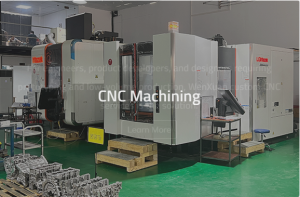Feedback at Speed and Iterating Fast
When it comes to product development, rapid prototyping is a total game-changer, reducing the time to go from concept to product from months to weeks. Products can be conceptualized, designed, and converted into functioning prototypes in days, not weeks, with technologies such as 3D printing, CNC machining, and laser cutting. Rapid prototyping reduces the development cycle by 63%, yielding faster feedback and iterative adjustments, typical of what a DSL. According to industry research The rapid speed and precision in which you can test ideas and hone in on your designs is unprecedented.
Optimized for Cost-reduction and Cap-Ex Efficient
Cost savings is one of the most important benefits of rapid prototyping process. Traditional prototype methods almost always need expensive tooling and molds; these are both expensive to buy and time-consuming to manufacture. Rapid prototyping, in comparison to this, gets rid of the requirements of most of this prototype costs upfront. According to a 2022 survey by Sculpteo, 53% of companies who use rapid prototyping reported important savings in the cost of the prototyping process. In addition, the materials often used in rapid prototyping, such as PLA and ABS plastics, not only cost less overall, but also allow for far more ease in making alterations or changes in rapid prototyping than with traditional materials.

Increased Creativity and Innovation
The quick time to manufacture for rapid prototyping pushes more innovation in the development of the product. This makes designers and engineers more willing to take risks and play around with new ideas, knowing that when they need multiple iterations of prototypes this can be done affordably and with a fast turnaround time. This environment enables for innovation and results in better and more uncommon solutions of the items. A Journal of Engineering and Technology Management study revealed that companies that use 3D printing enjoy 50% higher innovation outcomes when measured by metrics such as patent submissions and new product items.
Better Accuracy and More Control
Accuracy of Prototypes, Fast prototyping boosts the authenticity of prototypes as compared to traditional methods. Sophisticated digital tools enable control over dimensions and material properties in such a manner that the prototypes are nearly identical to the final product. This precision is vital in fields such as aerospace, healthcare, etc., where a millimeter can have millions of consequences. It also allows customization at a level that would otherwise disrupt production timelines. Silicon-based 3D printers can enable the cost-effective production of customized items, such as tailored medical implants and automotive parts.
Risk Mitigation
Bringing new products to the market is risky business — especially if you are sticking with untested designs. Rapid prototyping is a way of testing products before anything gets finalised and real-world data can be collected in such early stages only. This can reveal design defects or potential failures that would not be apparent in digital simulations. Early treatment of these issues helps prevent expensive recalls and damage to the brand. One illustrative example is of a major auto OEM using rapid prototyping to test a new engine design and catching a major flaw that would have caused an engine failure well in the field, potentially saving $10s of millions in warranty work.
Such is the GMC rapid prototyping that it becomes an essential instrument in today society in the course of product development giving the products many more leads than their traditional counterparts. Not only does it save time and money in turning ideas into high value products, but also it unleashes a more innovative, less risky development process. To learn more about the influence and approaches of rapid prototyping, check out our comprehensive rapid prototyping resource page.